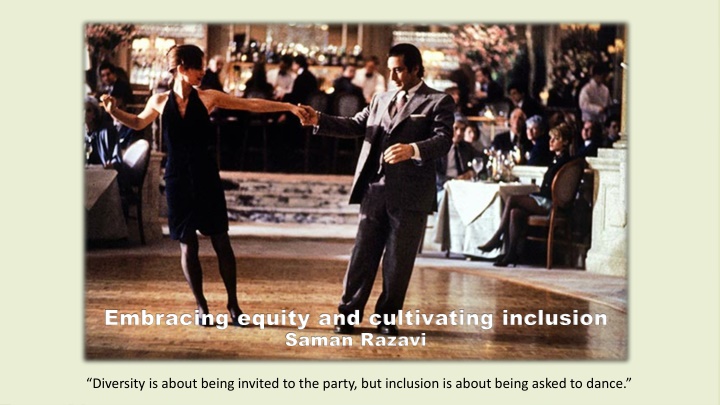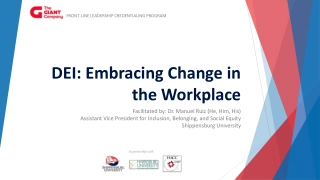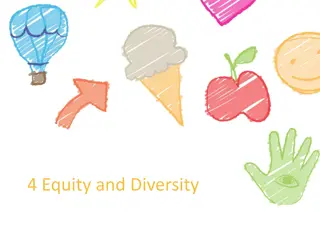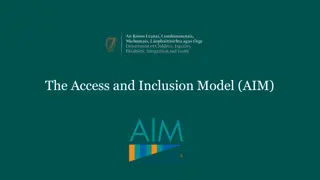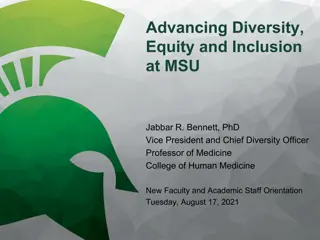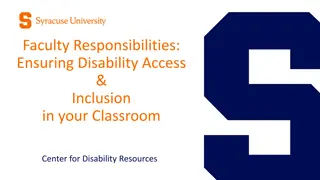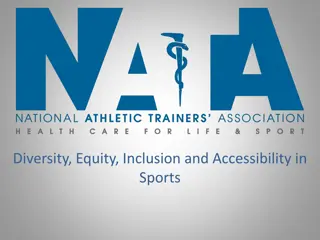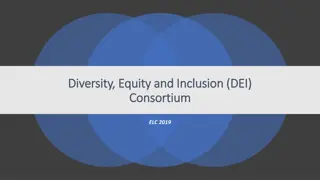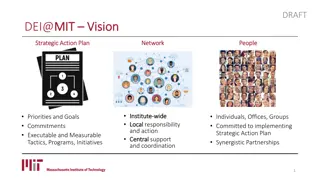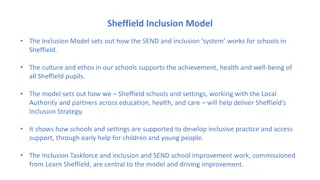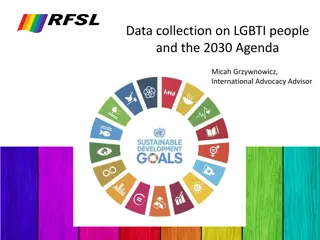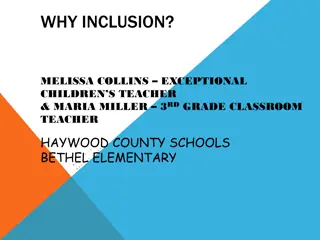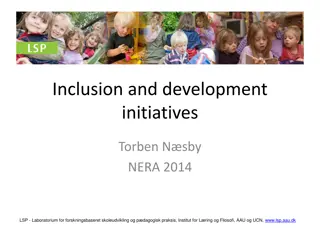Embracing Equity and Cultivating Inclusion in Professional Environments
The challenges society faces in achieving equity, diversity, and inclusion (EDI) principles, especially in academia and professional settings, are highlighted. The importance of moving beyond diversity to true inclusion is emphasized through personal experiences and reflections. The article calls for a deeper understanding and appreciation of the value diverse groups bring to organizations.
Download Presentation

Please find below an Image/Link to download the presentation.
The content on the website is provided AS IS for your information and personal use only. It may not be sold, licensed, or shared on other websites without obtaining consent from the author.If you encounter any issues during the download, it is possible that the publisher has removed the file from their server.
You are allowed to download the files provided on this website for personal or commercial use, subject to the condition that they are used lawfully. All files are the property of their respective owners.
The content on the website is provided AS IS for your information and personal use only. It may not be sold, licensed, or shared on other websites without obtaining consent from the author.
E N D
Presentation Transcript
Embracing equity and cultivating Embracing equity and cultivating inclusion Saman Razavi Saman Razavi inclusion Diversity is about being invited to the party, but inclusion is about being asked to dance.
2 The uprisings in the wake of George Floyd s tragic death in the U.S. last May have revealed once again the deep-seated challenges society faces in aspiring to equity, diversity and inclusion (EDI) principles. These challenges, sadly but not surprisingly, afflict academia and professional environments as well, which typically champion change for a better future. It appears there is goodwill to unearth and address the root causes of inequality, as EDI has now become a trio of principles being embraced at various levels of government, academia and professional organizations in North America. Great! But how good is our current synthesis of the EDI principles? How do we orient future policy activities towards those principles?
3 Let me flash back for a moment. In 2012, I was a brand-new landed immigrant in Canada and a fourth-year PhD student. I was young, ambitious and looking for new horizons. While still a student, I convinced a firm to offer me a fellowship, while still a student to support their research and development. One day towards the end of my fellowship, a high-level manager from the head office was to visit us, and everyone needed to be at their desks and prepared to present their work. It was very exciting! Taking the impending visit seriously, I crafted my pitch and rehearsed it. The time arrived and this manager took a tour of our office, stopping at every desk for a short while, asking each person what they were working on. At my desk, however, she started instead with, Where are you from? She continued with a sarcastic comment about my country of origin and walked away. She didn t wait to hear my pitch.
4 The experiences of first-generation immigrants, particularly racialized people, are full of such stories. Many fail to speak out, however, because they are simply too occupied by the challenges of settling into their new country years after their arrival, or because they are still having feelings of insecurity and anxiety. The host community, including those in the professional and academic environments, seem to have mixed feelings about these minority people. I know colleagues who truly support them, perhaps mostly on humanitarian grounds. There are others, however, who believe that minorities will take their jobs and jeopardize public safety and social security. Across this wide spectrum, there may not be many who really understand and appreciate the true value that such diverse groups have to offer.
5 It is hard to deny that diversity is a good thing. A diverse range of backgrounds, stories, experiences and opinions provide the ingredients needed to bring forward new ideas and innovations. It appears to me that many colleagues in academia share this sentiment and celebrate diversity. So, what is wrong then? Diversity, when not accompanied by principles of inclusion, results in a segregated mosaic of tiles. Diversity is about being invited to the party, but inclusion is about being asked to dance, says Verna Myers, the influential American inclusion activist. It is the dancing that enables the true potential of diversity to be realized.
6 Is that all of the problem? No. We must recognize that equity is the core to inclusion, not only something to ensure diversity as it is commonly interpreted and implemented for example, in recruitment processes that focus on balancing diversity statistics. Equity, as well, should be embraced by the rewards system in the workplace. Perhaps what is generally ignored is that minority people typically have worked much harder than their majority colleagues to overcome a vast range of barriers and to get where they are today. Even when they reach a senior position in academia, for a variety of reasons they still have to work harder and longer hours. For example, many are non-native English speakers in an environment where the speed and elegance of communication in English is key for being included and rewarded.
7 The incident in the last year of my studentship, and many other similar incidents, were not the result of a lack of diversity in those environments. They were the result of an often unconscious ignorance of the principles of inclusion and equity. And this is not only about racialized people. It can also apply to all marginalized groups, including women, LGBTQ and Indigenous peoples. One major factor impeding progress is that experiences similar to mine are often revealed in conversations in small social circles that do not include majority colleagues who are often unaware of such experiences and their implications. The fear of being put in an uncomfortable position, or even being ostracized for speaking up, pushes minority people to just shrug and shy away from EDI initiatives.
8 So, what can we do? Diversification is easy to define and measure, and thus manage; inclusion and equity are certainty not. Greater effort is required to define what inclusion and equity mean in various contexts, followed by collective discussions on how to develop targets and measure progress. Building inclusion is a cultivation process. We need to be innovative in this process, as inclusion and equity, unlike diversity, are essentially qualitative, possibly with social perceptions that vary over time.
9 A possible, and perhaps essential, avenue forward is to recognize examples of good conduct and bad conduct in day-to-day life and use them in this process, similar to the use of examples in developing and teaching codes of ethics by professional associations. The problem is such examples are rarely reported and therefore almost unavailable. A first step could be to create a forum where people can speak out freely, and perhaps anonymously, and share their stories and their expectations about good practices around inclusion and equity. Not only could the collection and synthesis of such examples inform policy-making around EDI, but it could also form the basis of awareness training programs for both majority and minority groups, thereby making them probe into what they could do at the individual and collective levels.
10 The bottom line is that a more inclusive and equitable society is about far more than diversity statistics. Inclusion and equity are more about seeing people for who they are and how they can contribute to society. It is incumbent on all of us, not only those who are privileged to open up the dance floor, to set the conditions to embrace equity and cultivate inclusion. Members of minority groups, too, need to contribute actively to strategizing EDI initiatives at organizational levels relevant to their position. Making a difference will take many small steps and need collective wisdom, empathy and, importantly, patience. Likely, we will make mistakes and have to continuously adapt and refine our efforts. However, as Vincent van Gogh was reported to have once said, great things are not done by impulse but by a series of small things brought together.
References 11 Razavi, S. (2020). Celebrate diversity, embrace equity and cultivate inclusion, University Affairs. And, another relevant reference is Razavi, S. (2021). Breaking through language barriers. Science.
